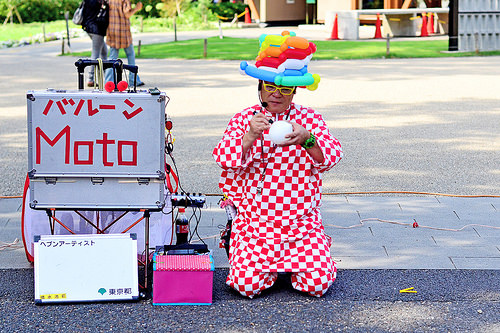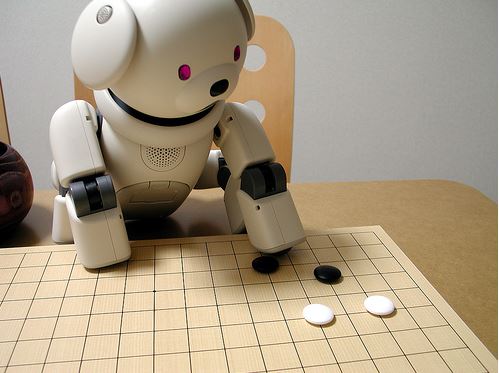Learning Japanese through Flash Cards vs. Textbooks
I think flash cards get a bad name. They stir up images of the old days of writing on two sides of a physical piece of paper, with vocabulary on one side, and the meaning on the other. To prepare for a test you would summon a horde of flash cards. Because of this history, when you see something like we do here by teaching Japanese solely through flash cards, some people get confused or look down on them.
“C’mon, they’re just flash cards! Is that it?”
“Flash card” is the terminology used, but these days, they take on a whole new role. It’s not just about reviewing lists of words anymore.
Flash cards are textbooks.
People often ask if they need to go through textbooks while going through the Jalup decks. I have to remind them that the decks are the textbooks.
Japanese textbooks usually are presented in the following format:
1. Teach and explain a concept(s)
2. Provide a few examples of the concepts to clarify them
3. Repeat teaching a few times for new concepts
4. Give review activities/exercises at the end of a section, going over what you learned
5. Return to step 1
6. After several repeats, have a much larger review of all the material
Flash card decks, if done properly, do the same thing, and also shine in a few additional ways:
1. Teach and explain concepts, in very simple form, as to not provide too much information or overwhelm
2. The example is the front of the card. Other examples come in when later cards use what has already been taught
3. The teaching comes in every single new card. It’s not grouped together into lists or sections. One thing at a time
4. Your review activity and exercises are spread out over time through SRS
5. Return to step 1, after every single card
6. There is no need for a much larger review
Notice the similarities ?
How about some more positives?
– Flash cards give you a number. Concrete goals that can be split into smaller goals. They are hundreds or thousands of little battles, rather than “finish one textbook” or “finish one chapter.”
– If you glued together 500 flash cards, you’d have a textbook. The information is the same, it’s just presented in a different way.
– How, when and how much you learn and review is already all set up for you.
Some textbook love?
There are plenty of people that enjoy textbooks. They like having a book in their hands and the traditional full setup that it gives. Or they like the new online textbook style a lot of sites now offer. If you like textbooks, continue using them. I’ll still always have fondness for the Genki series I completed many years ago.
However, flash cards are not second class. They help a different type of learner. Maybe if they had a better, catchier name, people would rethink them. “Information explosions?” “Knowledge infusions?” I don’t know, but before you are about to put flash cards down, think about what they can actually do.
What’s your preference?
Do you like textbook structure? Do you like flash card and deck learning structure? Or do you like both?
Founder of Jalup. iOS Software Engineer. Former attorney, translator, and interpreter. Still watching 月曜から夜ふかし weekly since 2013.






I prefer anki flash cards as my primary method, with textbook style explanations (like tae-kim) available to fill in the gaps if I don’t understand something or if I want to know a little more detail. I’ve tried studying primarily with normal textbooks before, but I always get bored and quit.
Taekim is definitely one of the top textbooks used for adding extra explanation where you need it.
I prefer linked flash cards, and Jalup Next is king. For me, textbooks feel overwrought and inert when compared with well-designed flash cards.
A great deck of flash cards comes to life: once we complete the first review/card addition, we have set the deck in motion, and the next card pops up–game on, we’re interacting with Japanese now, getting caught up in the motion, racing toward the finish line, one in a graduated sequence of many finish lines.
Motion is a good point you bring up. A textbook is easy to get stuck in if you aren’t careful.
I liked textbooks well enough – I’m one of those learners that benefits from information overload in a way – one concept at a time to *learn*, but reading all the background (without the specific intent to learn it) seems to really help me. Actually, for this reason beginner textbooks don’t work for me – I really hate the oversimplifications. I prefer to use intermediate/advanced textbooks to really dig into the concept or word I’m trying to understand in a technical way. But then, I’m super interested in languages and linguistics in general, and I know what they mean by all the terms (participle, present progressive, relative pronoun, all that jazz).
Flashcards, though, make learning much faster and more efficient. The examples and background can be gained through immersion plus selective reading of more advanced textbooks (I like the Dictionary of Japanese Grammar, though I’d love to hear about a better one). they also allow me to pace myself and set goals more easily, so I’m using them. It’s not an either or for me; if I was using a textbook, I’d still make sentence flashcards, because it gets sentence examples into your head and saves your ass on the “what should I study today” and “what should I review today” front.
I’d recommend this one: http://www.cdjapan.co.jp/product/NEOBK-1877603
It’s big (760 p.), really comprehensive, and usually goes into more detail than the ADJG, providing more example sentences for the topics as well.
It definitely does not have to be an “either or.” If you can enjoy the best of both worlds, then that’s a good path to travel.
I use a textbook in class, and use Anki/Memrise for extra vocab and grammar practice. I always think you should use at least 2 different methods to get the best of both worlds.
And even if you don’t use 2+ methods, at the very least try a few methods first, so you can see what works for you.
Anki with the Jalup decks works great. So much more efficient than a book for me. Daily goals are clear. No trying to figure out what to study next. I know it works because is I’m actually confidently reading and engaging in simple Japanese conversations after only a year.
SRS is truly the way to go. Wish it was around back when I was in Med school. It would have made it much easier!
I would’ve used Anki from elementary school haha :P
I didn’t even know how to properly use a textbook until I came across anki. It wasn’t until I found the Jalup decks that I was able to get past the beginner stage. The quality of the deck makes a huge difference, make sure you are happy with yours.
I recently started studying Spanish. I told myself I wasn’t going to use anki. I gave it an honest try, I did the best I could and now I’m building my own deck from the textbook using anki. I can’t seem to get away from it.
Anki is just so perfectly aligned to learning any foreign language. Don’t fight it :)
I’m a hybrid learner. I like going over the textbook and exercises to make sure I’ve really learned the concepts and know how to apply them, then I review the example sentences in Anki to make sure they stay learned.